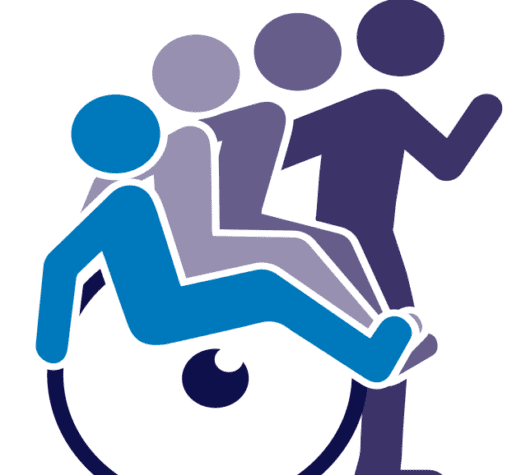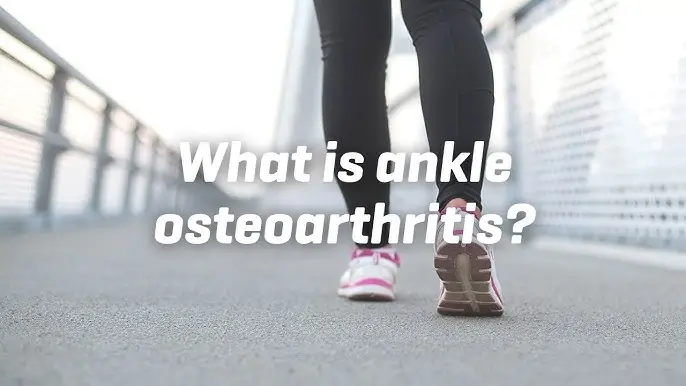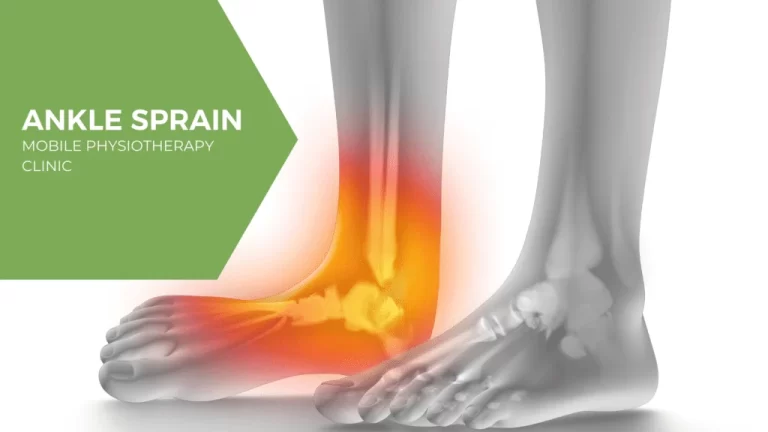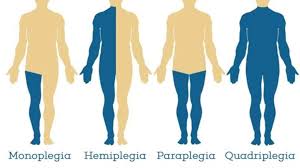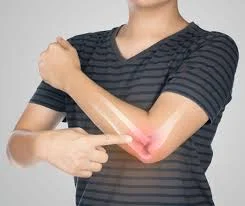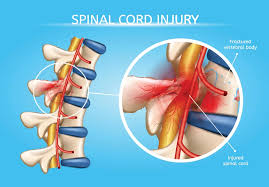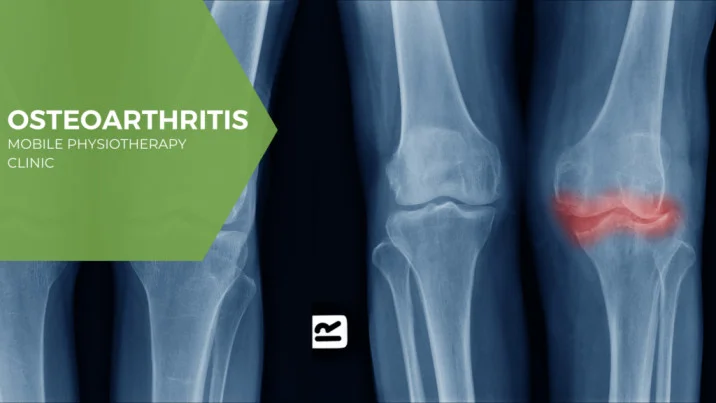What Is Ankle Osteoarthritis?
Ankle osteoarthritis results from the deterioration of the cartilage between the bones. Joint pain, swelling, and stiffness may result from this. Ankle osteoarthritis can be treated with non-pharmacological methods, drugs, and surgery.
Table of Contents
What is Ankle Osteoarthritis?
- Cartilage acts as a protective cushioning across the surfaces of the bones that meet in a healthy ankle.
- Due to the steady deterioration of the cartilage, this protective area gradually shrinks in ankle osteoarthritis. This causes the bones to rub against one another, resulting in painful bone spurs.
- Ankle osteoarthritis affects around 1% of people. The primary cause, according to research from 2018, is trauma, typically from a rotational injury that results in bone fractures and ligament strains. This usually happens to younger individuals.
Causes of Ankle Osteoarthritis
- In contrast to other body parts, osteoarthritis of the ankle is not the “wear and tear” type that comes with age. Rather, an injury is usually the cause. It may be referred to as “post-traumatic” arthritis by your physician.
- A single event, such as a fracture, or a series of injuries over time, such as recurrent sprains, can result in ankle osteoarthritis.
- You may also develop ankle osteoarthritis if you have high arches, bow-legged, knock-kneed, or flat feet, since these abnormalities place additional load on your joints.
Symptoms of Ankle Osteoarthritis
Over time, the symptoms get worse and include:
- Joint pain and stiffness that worsen in the morning
- swelling on one side or all around the joint
- decreased range of motion (the joint cannot bend fully)
- tenderness when the joint is touched or squeezed
- difficulty walking
Diagnosis and Tests
- A physical examination will be used by a medical professional to detect arthritis in your ankles and feet.
- You may want to consult a podiatrist. They will check your ankles, toes, and feet and inquire about your symptoms.
- Inform your healthcare physician about the onset of pain and stiffness, as well as any activities or times of day that aggravate the symptoms.
- Report any symptoms in one or both feet to your healthcare physician.
- Questions about shoe types and whether they worsen symptoms may be requested by your healthcare professional. They could observe your stride, or how you move.
- Your range of motion, or how far a joint can move, will most likely be assessed by your healthcare professional.
- They could contrast the range of motion of one joint with that of other, unaffected joints in your other ankle or foot.
Treatment of Ankle Osteoarthritis
The most popular therapies for arthritis include:
- Over-the-counter (OTC) pain relievers
- Corticosteroids
- Orthotics
- Surgery
Over-the-counter (OTC) pain relievers
Acetaminophen and nonsteroidal anti-inflammatory medicines (NSAIDs) are over-the-counter medications that treat pain and inflammation. Avoid using these drugs for longer than ten days at a time without consulting your doctor.
Corticosteroids
Prescribed anti-inflammatory drugs are called corticosteroids. Your doctor can give cortisone injections straight into the affected joints.
Orthotics
You may purchase over-the-counter or have custom orthotic shoe inserts created. You will learn the type you need and how frequently to wear them from your provider. They may also advise against wearing specific kinds of shoes in order to support your ankles and feet.
Surgery
Surgery is often only recommended by your doctor if nonsurgical therapies have failed and your arthritis symptoms are severe enough to adversely affect your quality of life. An arthroscopy may be necessary to treat early-stage arthritis in your ankles or feet before it causes serious harm. What to expect and the sort of surgery you will require will be discussed with you by your physician or surgeon.
Exercise For Ankle Osteoarthritis
- Ankle exercises can be difficult to begin, so if you’ve never done them before, you might need to start out slowly and gradually increase your strength and range of motion.
- Your initial goal should be to increase the range of motion and progress carefully through the exercises. A non-weight-bearing position, such as sitting or lying down, is frequently where this happens. Weight-bearing activities such as toe or calf lifts can be progressed to as your strength increases.
- Exercise should be stopped if it results in chronic pain or discomfort. The workouts are intended to increase your function, strength, and mobility. A healthcare expert should be consulted if you have persistent, acute pain, even when some discomfort from activity is normal.
Exercises
- Ankle Pumps
- Ankle Rotation
- Ankle Alphabet
- Resisted Ankle Dorsiflexion
- Resisted Ankle Eversion
- Resisted Ankle Inversion
- Calf Raises
- Toe Raises
Ankle Pumps
Ankle pumps help improve your ankle joint‘s range of motion.
To perform the exercise:
- Raise your foot just a little bit off the floor while seated.
- For 5 to 10 seconds, point your toes away from your ankle and hold them there.
- For a further five to ten seconds, bring your toes close to your ankle.
- You should experience a tiny squeeze at the front of your ankle and lower leg when you point your toes away, and a tight sensation in your calf behind your lower leg when you pull your toes up.
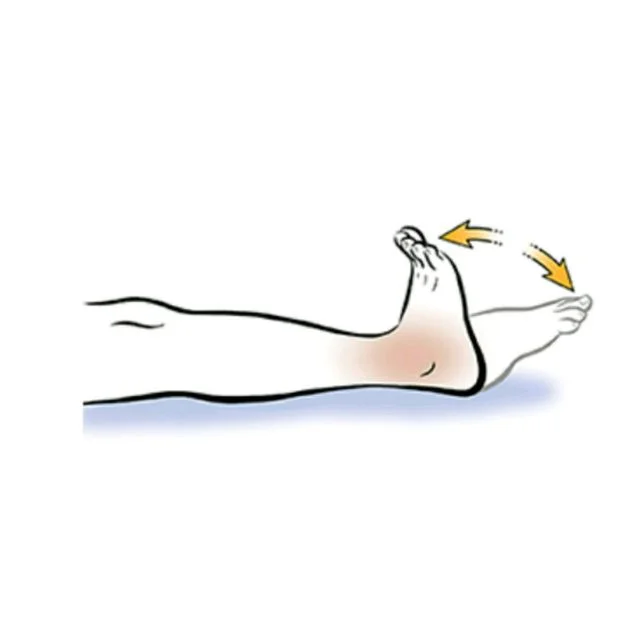
Ankle Rotation
To perform the exercise:
- Place your injured ankle on the knee on the other side while seated in a chair.
- Hold the ball of your foot in one hand and slightly above the ankle joint with the other.
- For a few seconds, slowly turn your ankle clockwise. Then, turn it counterclockwise for a few seconds.
- If one way aches more than the other, try warming up with the less painful one first, then try the uncomfortable one again.
As you do the rotations, you should get a mild pinching sensation around your ankle joint. One may experience crepitus, or a grinding sensation, in situations of severe ankle arthritis. If you experience any pain, stop your activity.
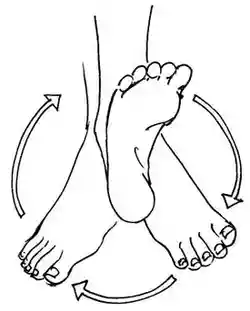
Ankle Alphabet
To perform the exercise
- Your feet should be flat on the ground while you sit in a chair.
- Using your toes, draw the alphabet’s letters in the air while lifting the affected foot just off the ground. This should cause your ankle to move during the exercise.
- You may strengthen your ankle more by doing the alphabet from A to Z and then Z to A if this exercise gets too simple.
- Try drawing the letters in cursive writing and switching them up to test your ankle even more
Resisted Ankle Dorsiflexion
Additionally, resisting ankle dorsiflexion might strengthen arthritis-affected ankles.
To perform the exercise:
- With your feet flat on the ground, take a seat in a chair and extend one knee.
- Using a resistance band (which your neighborhood physical therapist might have on hand), create a loop and secure it with a closed door or a solid item. (Alternatively, you can ask someone to hold a resistance band for you.)
- Wrap the loop over your affected ankle’s upper foot.
- Keep your knee and leg straight, and slowly flex your ankle by bringing your toes up toward it. The tibialis anterior, a muscle in your lower leg, is strengthened as a result.
- After holding this posture for a few seconds, carefully bring your ankle back to its initial position.
- The front of your shin should feel tight throughout this exercise. As you draw up and drop your ankle down, make sure to move slowly and gradually.
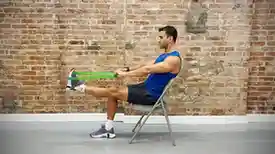
Resisted Ankle Eversion
The process of eversion involves turning the foot at the ankle away from the body’s midline. Using a resistance band makes this exercise more difficult.
To perform this exercise:
- In front of you, sit on the floor with your legs straight out.
- Hold a resistance band in your hand by its loose ends.
- Your heel should be off the ground while you support your lower leg with a rolled-up towel.
- Place the foot of the affected ankle inside the resistance band’s loop while pressing the other foot up against it. As you move the band from your injured foot to the other foot and back towards your hands holding the loose ends, it should form an L.
- In the loop, press outward from your other foot using the outside border of the foot. When you twist at your ankle rather than your leg during an exercise, make sure your knee is facing toward the ceiling.
- During this exercise, the peroneal muscles on the outside of your lower thigh should feel tight. The ankle eversion exercise should be performed slowly and carefully as usual.
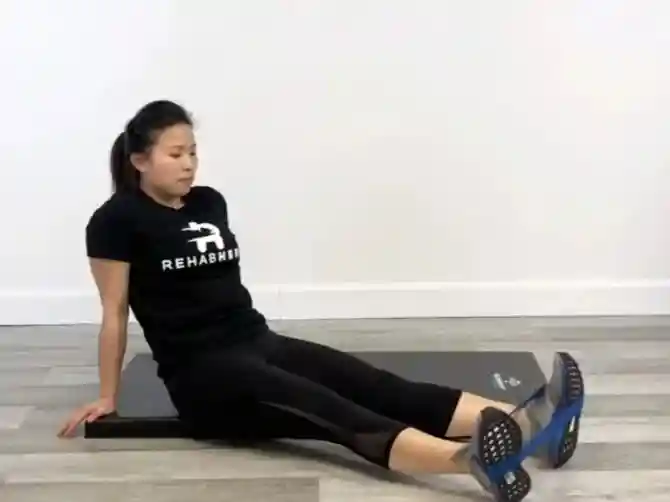
Resisted Ankle Inversion
The process of inversion involves turning the foot at the ankle toward the direction of the body’s midline.
To complete this exercise:
- Stretch out your legs in front of you while sitting on the floor.
- Holding the loose ends of a resistance band in your hand, put the affected ankle’s foot inside the resistance band’s loop.
- Place the resistance band behind the ball of your other foot and around your injured foot by crossing your other foot over.
- Move your foot away from your other foot by applying pressure on the inside of the affected foot against the resistance band. For your ankle to be the source of movement, try to maintain the other side of your leg straight.
- Return it to the beginning position after holding it for a few seconds.
- Your inner ankle and foot arch are supported by the tibialis posterior muscle, which is strengthened by the exercise.
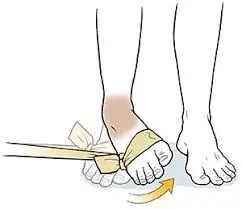
Calf Raises
A useful workout to help with ankle arthritis is calf raises.
To complete the exercise:
- Maintain a shoulder-width distance between your feet while holding the back of a solid chair.
- Lift yourself to your toes while elevating your heels.
- After holding this posture for five seconds, carefully lower yourself and put your entire foot back on the ground.
- Make sure you move slowly and properly. The muscles in your calves behind your lower legs should feel tight.
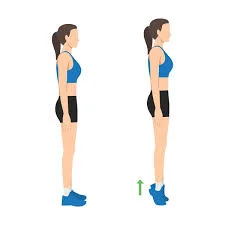
In a few weeks, this activity could become effortless. The calf raise can be made more difficult by doing it with only one foot.
Toe Raises
To complete the exercise:
- To maintain balance, stand with your feet shoulder-width apart and grip the back of a chair.
- While maintaining your heels on the floor, raise your toes off the ground.
- After five seconds of holding this posture, put your toes back on the floor.
- You should walk gently, and you’ll probably notice that the muscles at the front of your lower legs are tight. This exercise is more difficult if you do it on one leg.
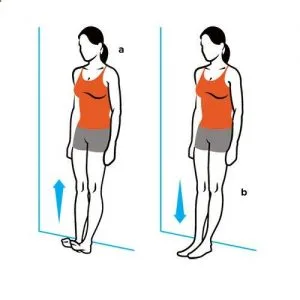
Prevention
There is not always a method to avoid arthritis since certain forms occur naturally or as a result of uncontrollable medical issues. Nonetheless, you may reduce your risk of arthritis by:
- staying away from tobacco products.
- following a healthy diet and exercise program.
- Participating in low-impact activities.
- Always wear appropriate footwear and protective equipment, whether working, playing sports, or participating in physical exercise.
Summary
- You go through your everyday activities thanks to your feet and ankles. The symptoms of arthritis, such as pain, stiffness, and decreased movement, are, at best, irritating regardless of the cause. In the worst cases, they may have an impact on how much you enjoy whatever you do.
- Don’t disregard ankle and foot pain or other symptoms. It’s natural to experience discomfort occasionally, particularly after a strenuous workout or long day, but you shouldn’t feel uncomfortable all the time.
- If you experience new or worsening symptoms that don’t go away on their own, see a doctor immediately.
FAQ’s
Stiffness: Stiffness, or decreased mobility, is typical in people with osteoarthritis. Stiffness in inflammatory arthritis is frequently worse in the morning. The sound of cracking or popping may be caused by tiny fragments of bone or loose cartilage getting stuck in the joint.
Hence, trauma is the primary cause, resulting in 75% to 80% of all cases. Ankle fractures (malleolus, distal tibia, talus, etc.) account for 62% of these cases, while unresolved chronic ligament injuries, especially those affecting the lateral ligament, are responsible for another 16%.
NSAIDs, acetaminophen, physical therapy, weight loss, lower-impact activities, orthotics, bracing, and corticosteroid injections are conservative choices for treating ankle osteoarthritis. Surgical procedures such as ankle arthrodesis (fusion) or total ankle replacement (arthroplasty) may be considered if they don’t work, depending on the ankle’s alignment and severity.
You can support your ankle and foot joints (and your entire body) by stretching, yoga, swimming, walking, and riding a bike. Discuss effective exercise with your healthcare physician. They will recommend ways to keep you moving in an appropriate way.
References:
- Foot and ankle arthritis. (2025, June 2). Cleveland Clinic. https://my.clevelandclinic.org/health/diseases/13900-foot-and-ankle-arthritis
- West, M. (2021, December 22). What to know about osteoarthritis of the ankle. https://www.medicalnewstoday.com/articles/osteoarthritis-ankle
- Gardner, A. (2025, April 17). How osteoarthritis hurts ankles. WebMD. https://www.webmd.com/osteoarthritis/bone-against-bone
- Pt, B. S. (2024, March 1). Exercises to help with ankle arthritis. Verywell Health. https://www.verywellhealth.com/ankle-arthritis-exercises-5114508
